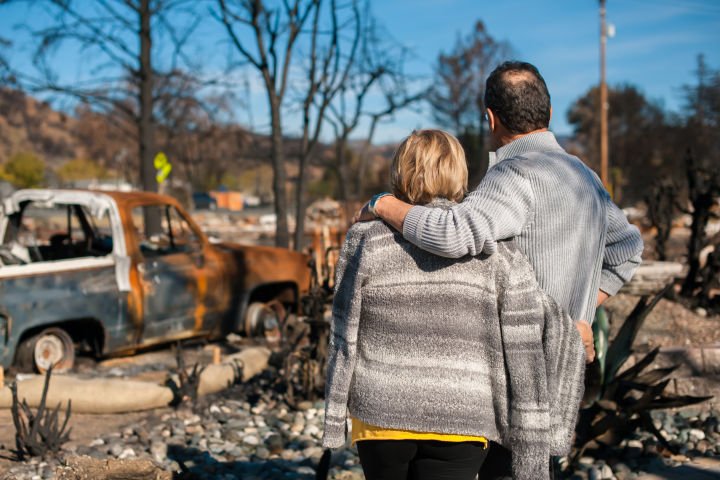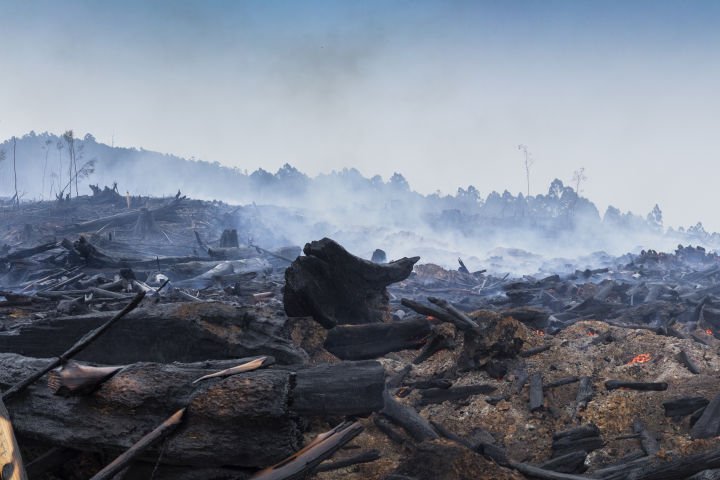Homeowners urged to act now to protect their home ahead of El Niño bushfires this summer
Suncorp Insurance warns Aussies to maintain and strengthen the resilience of their home as new data reveals that half of Aussies don’t know that rivers, creeks & roads cannot stop the path of extreme bushfires.
Share

Suncorp Insurance is warning Australians not to be complacent about bushfires this summer, with The Bureau of Meteorology (The Bureau) predicting the development of El Niño. This projection of hotter and drier conditions, fueled by abundant vegetation growth following consecutive La Niña-driven rainfalls enhances this risk of bushfires. Homeowners are being strongly advised by Suncorp Insurance against underestimating the danger of bushfires, particularly grass fires.
New research released by Suncorp Insurance has exposed significant gaps in Australians' understanding of bushfire safety, with over half of the population lacking vital knowledge about the behavior and dangers associated with these destructive natural disasters.
The research, released today, sheds light on several misconceptions that could potentially put lives and properties at risk during bushfire emergencies.
#Key findings include:
1. Limited Understanding of Fire Behavior
More than half (55 percent) of Australians are unaware that rivers, creeks, or roads cannot halt the path of a highly intense bushfire. This knowledge gap becomes even more concerning in regional areas, where the lack of awareness stands at 46 percent.
2. Ignorance about Fire Front Danger
Equally alarming is the revelation that 55 percent of Australians do not recognise the most perilous section of a bushfire: the front. This ignorance could lead to poor decision-making during evacuation efforts and fire containment.
3. Underestimating Ember Hazards
Approximately 1 in 4 Australians (26 percent) are uninformed about the fact that embers, often overlooked but highly dangerous, can travel distances of up to 40 kilometers during an intense bushfire. This lack of awareness could result in inadequate precautions and inadequate protection measures.
4. Overlooking Ember-Related House Fires
Shockingly, 16 percent of Australians remain oblivious to the possibility that a house can catch fire from embers well in advance of the fire front. This misconception might hinder preparedness efforts and jeopardize homes that could otherwise be safeguarded.
5. Misunderstanding Bushfire Causes
Almost one third (31 percent) of Australians don't know that lightning strikes are among the most common triggers of bushfires in the country. This gap in their knowledge contributes to a wider lack of understanding about fire dynamics and prevention.
6. Misguided Belief in Property Safety
A concerning 42 percent of Australians mistakenly believe it is safe to remain on their property during a bushfire event unless explicitly advised otherwise by Emergency Services. This misconception poses a significant risk to personal safety during critical moments.

Suncorp Insurance Climatologist Rhys Whitley
The long-term average climate for Australia is one that is getting hotter and drier, with an increase in the number of fire weather danger days and earlier starts to the bushfire season.
According to Suncorp Insurance Climatologist Rhys Whitley, “As a leading insurer we have developed a sophisticated view of Australian bushfire risk, utilising information from our claims experience together with climate data and the historical fire record. This allows us to identify regions that are currently susceptible to bushfire risk and are showing increased activity over time.
“Tragically, we expect those regions that have high risk now will only become worse as the world becomes warmer. This trend is particularly evident for much of southern QLD where fire-weather conditions are becoming more severe and emerging more frequently.
“As we look into the future, catastrophic bushfires will be an ever-present danger, and so monitoring of conditions (including fire weather, fuel loads) and extensive planning (i.e. property development, evacuation of communities and fire-fighting resources) is something we consider as a high priority. We also encourage homeowners to use the information available to them to be prepared for not only the upcoming bushfire season, but all future ones.”


#Bushfire danger in regions of concern
Australia is one of the most fire-prone continents on the planet, driven by the large extent of temperate, grasslands, open woodlands and broadleaf forests that accumulate significant fuel loads under a recurrent hot and dry climate. These regions dominate a lot of southern and eastern Australia where a significant portion of Australians live, so it’s vital that these communities are prepared.
Based on Suncorp’s internal view of bushfire risk together with the Bureau’s weather outlook, we are monitoring the following regions leading into the upcoming spring and summer season:
• Western Southern Queensland – west of the Great Dividing Range, near the NSW border
• The Mid-and-Far North Coast NSW
• Central Coast NSW
• South Coast NSW
• The Blue Mountains region
• Regional ACT
• Central parts of regional VIC – i.e., Dandenong Ranges and Gippsland
• South-west WA - i.e., Bunbury, Perth outer regions
• Parts of Southern and Western Tasmania
• Adelaide Hills, South Australia
South-west WA and Tasmania regions have been relatively dry over the last few seasons. These regions show signs of relative water stress and did not benefit from extra rainfall as other parts of the country did during the recent La Nina seasons
Suncorp Insurance Climatologist Rhys Whitley
“As a leading insurer we have developed a sophisticated view of Australian bushfire risk, utilising information from our claims experience together with climate data and the historical fire record. This allows us to identify regions that are currently susceptible to bushfire risk and are showing increased activity over time," said Dr Whitley.
“Tragically, we expect those regions that have high risk now will only become worse as the world becomes warmer. This trend is particularly evident for much of southern QLD where fire-weather conditions are becoming more severe and emerging more frequently.
“As we look into the future, catastrophic bushfires will be an ever-present danger, and so monitoring of conditions (including fire weather, fuel loads) and extensive planning (i.e. property development, evacuation of communities and fire-fighting resources) is something we consider as a high priority. We also encourage homeowners to use the information available to them to be prepared for not only the upcoming bushfire season, but all future ones.”

#Prepare your home for fire season
Suncorp’s Head of Home Claims Alli Smith said while the latest statistics are concerning, many Australians don’t know there are simple steps they can take to stay safe and ensure their home is better protected against bushfires.
“Trimming trees and branches near your home and keeping the lawn short in the backyard is important as grassfires spread quickly, and travel faster than you can run. Dead leaves and twigs can also catch alight easily, so be sure to regularly check downpipes and that gutters are clear of debris,” said Ms Smith.
“A bushfire regardless of whether you are at the front, side or behind it is incredibly dangerous, fast moving and unpredictable. All it takes is for one slight change of wind direction for things to go wrong.
“Many customers we talk to after they’ve been impacted tell us they thought they wouldn’t experience a bushfire in their lifetime, but we are seeing increased severity and frequency of these devastating weather events.
“Wherever you live, it’s good to understand your bushfire risk so you and your loved ones can stay safe and protect your home, contents, car, livestock and land.
“It not only has a financial impact, but also a psychological impact long after the last fire has been extinguished, with some families being displaced from their homes and communities for some time while their home is being rebuilt.
“Over the coming weeks, we’ll be reaching out to Suncorp Group customers who reside in high-risk bushfire areas to remind them to prepare their homes, and ensure they have the right level of insurance cover for their needs.”



